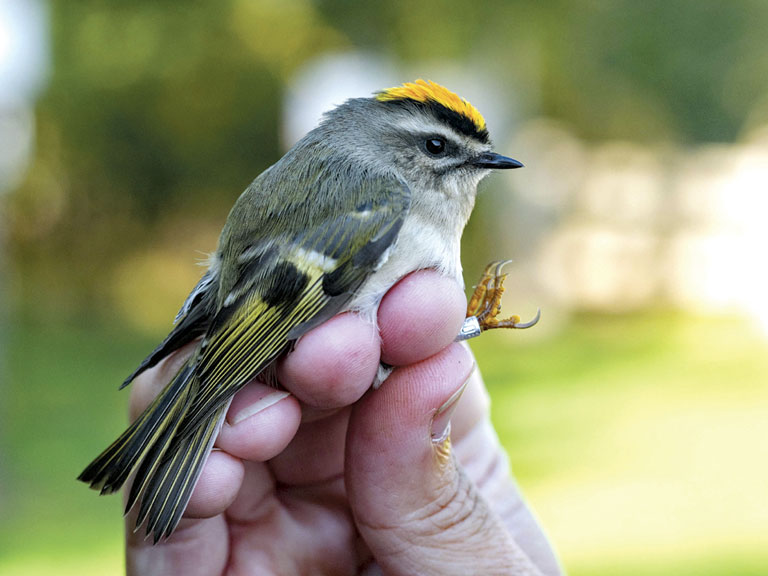County News
Fall migration monitoring

Bird banding continues at Prince Edward Point Bird Observatory
It has been a busy fall season at the Prince Edward Point Bird Observatory (PEPtBO). The fall migration actually starts sometime in early August. “Birds don’t have the same respect for the calendar as we do,” said PEPtBO station manager Ashley Jensen. “They start moving pretty much as soon as they’re done breeding. Some of our migrants that go really far, for example to Central and South America, start moving southward as early as August. We can actually be busy with lots of species by the end of August.” There was some early migration movement, particularly with warblers, but things seem to have returned to normal. Right now, some of the species that are local winter residents are returning from the northern boreal forests.
The fall monitoring program operates the same way as the spring program. Migrating birds are caught in fine nets at the site. Each bird is logged for species, sex, approximate age and overall health and then released. A small numbered band will be placed around leg, so that its movement can be tracked if it is captured again at this site or any of a number across North America. All of the data is shared on an international database to allow for continent-wide monitoring.
The spring migration started early this year, thanks to a more temperate winter that evolved into a warmer spring. “Temperatures started to go up earlier than we would generally expect, as so a lot of the birds—particularly the shorter distance migrants— keyed into that and started moving earlier than they normally would. Even some of our tropical migrants moved up a bit quicker. We had a lot of birds early this year,” said Ms. Jensen.
The captures during the fall migration comprise a high percentage of birds that were hatched this year, which is expected. “Birds have fairly tough lives, and it is hard to make it through that first year doing a full migration all the way to the southern US or Central America,” said Ms. Jensen. “Their reproductive strategy is they have quite a few young, and unfortunately a lot of them don’t make it. So we expect a high percentage of hatch year birds in the fall and less so in the spring. We can compare those numbers to get a general idea of what survivor ship was for those birds on their first migration south and then back north.” There are natural causes of mortality as well as man-made or anthropogenic causes, such as habitat loss. Banding data indicate that despite the initial high mortality rate, migrating songbirds can survive and successfully breed for five or more years.
One of the other PEPtBO programs is MAPS, or Monitoring Avian Productivity and Survivorship. This program looks at the resident summer bird population, those birds that breed here. There are currently five MAPS sites in the County. It takes approximately 10 years to collect enough data to reliably track population trends. This year’s data shows a slightly lower productivity, perhaps caused by adverse weather. It will take a few years to see if there is any kind of trend or if it is just natural variation. One interesting project on the horizon is to tag birds with a radio frequency identification chip that will “ping” off a local radio tower. Bird Canada is setting up radio towers across Canada to join a network across the US and Central America. This will allow for a finer level of detail in bird movement than is provided by the banding program, which only yields large area data. For more information about PEPtBO, please visit peptbo.ca.

Comments (0)